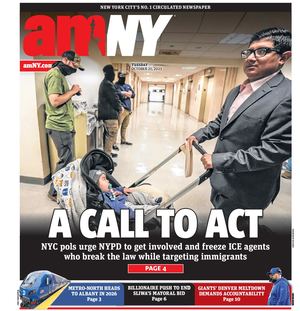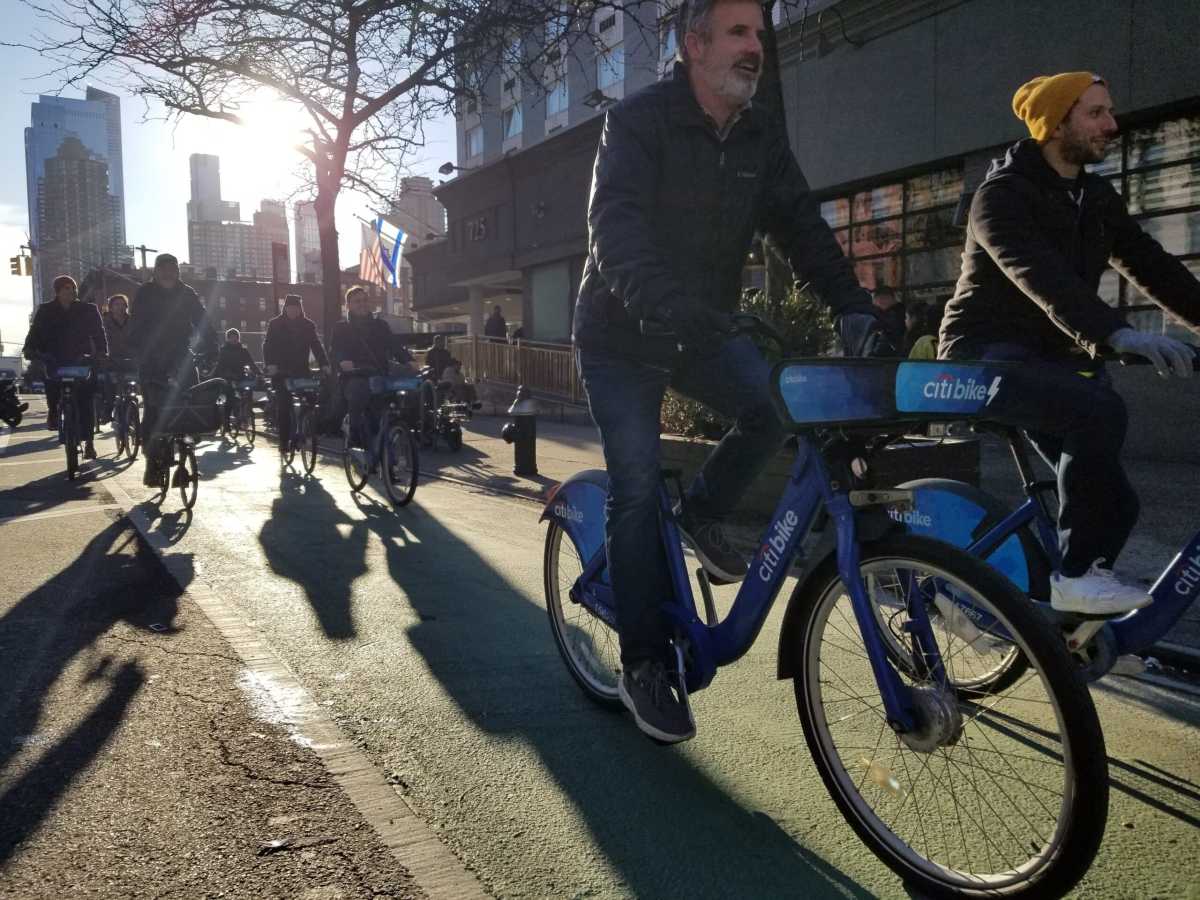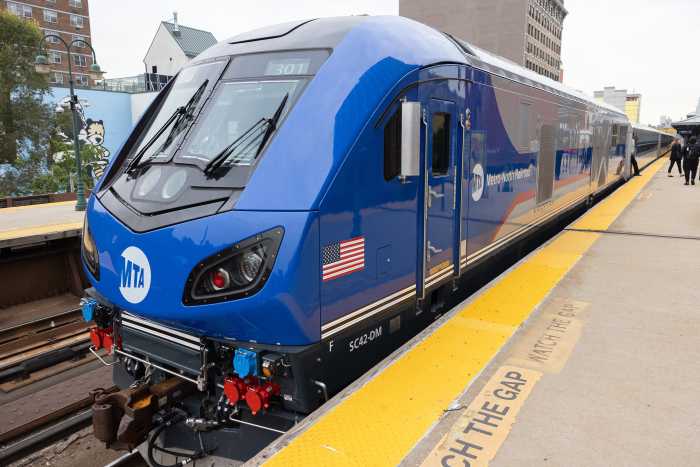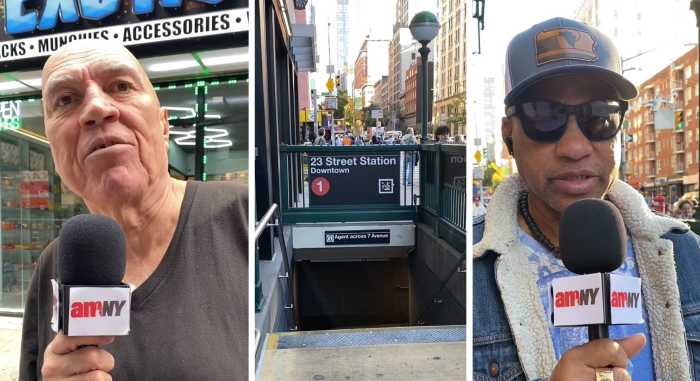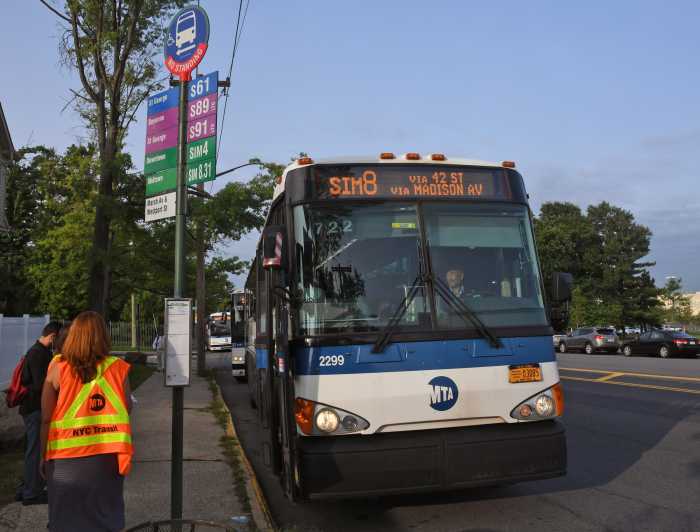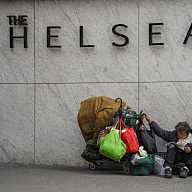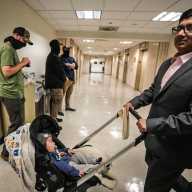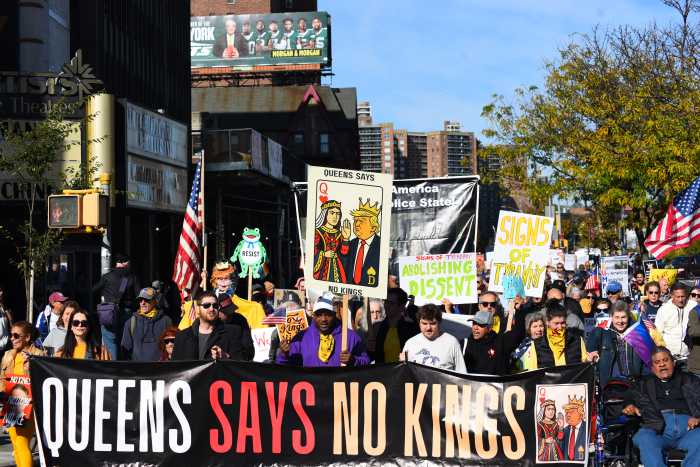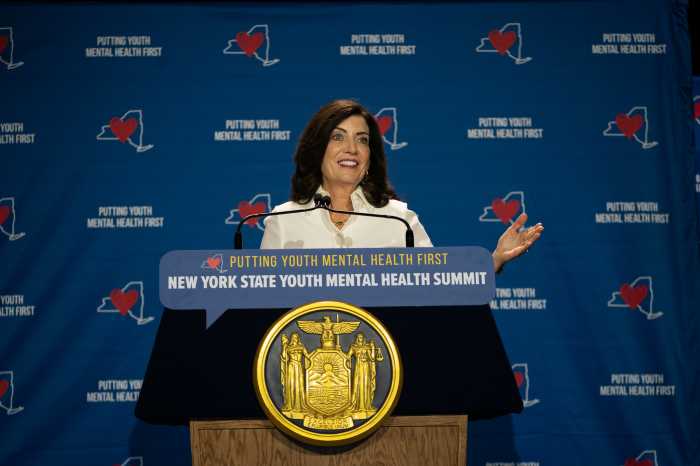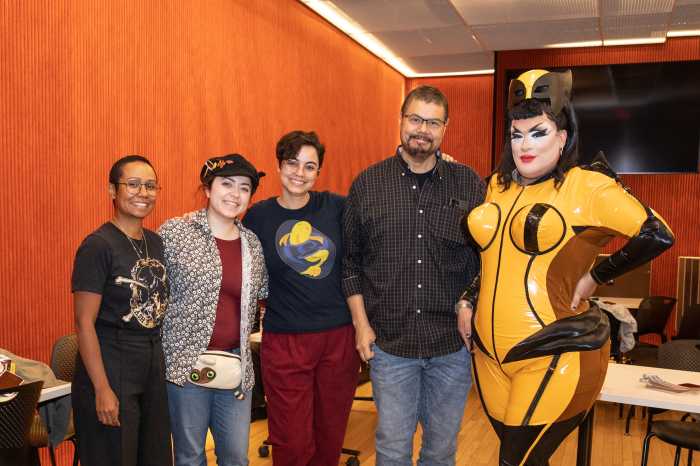The city has completed the installation of a new protected bike lane on 10th Avenue in Hell’s Kitchen, featuring a design considerably wider than the standard across the five boroughs.
Bike lanes vary across the five boroughs but are usually between 4-to-6 feet in width. The new northbound lane on 10th Avenue between 38th and 52nd streets, however, clocks in at a husky 10 feet, wide enough for two cyclists to share the space.
Aside from the bike lane, the Department of Transportation’s redesign project on 10th Avenue includes concrete pedestrian islands and turn-calming infrastructure at sites where motorists often make left turns, adding painted pedestrian space intended to improve visibility and slow down drivers making turns, when collisions often occur. DOT will also reconfigure traffic signals to give pedestrians a head start crossing at 41st and 42nd streets, where many drivers turn to enter or exit the Lincoln Tunnel.
The design changes reduce the number of northbound motor vehicle travel lanes from four to three. Next year, DOT intends to extend the beefy bike path down to 14th Street.
“The future of bike lanes is here, right before us,” said Meera Joshi, the Adams administration’s Deputy Mayor for Operations, at a press conference in Hell’s Kitchen Wednesday. “Everyone benefits from narrower car corridors, more pedestrian islands, wider pedestrian spaces, and bike lanes.”
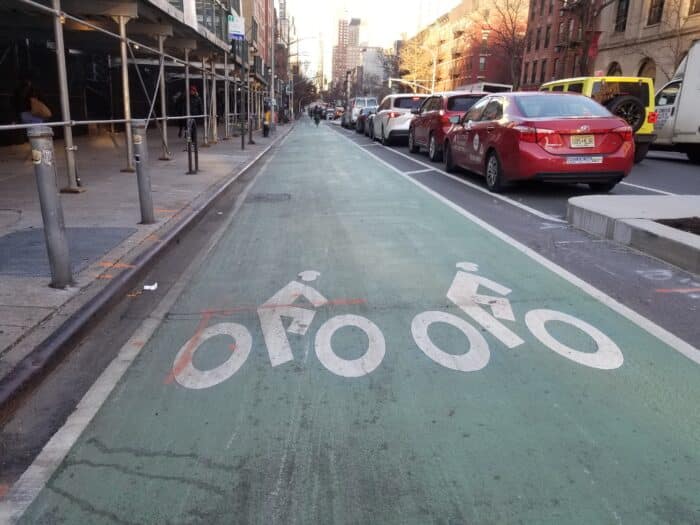
The wide bike path was not originally in the cards but was requested by the local Community Board and championed by the area’s City Council Member, Erik Bottcher. Bottcher said he regularly bikes along the stretch in Hell’s Kitchen, and predicted his mother would be happy to hear the road is now safer to travel on two wheels.
“10th Avenue has been a four-lane highway running right through our residential community. It’s also been one of the most dangerous stretches of roadway in all of New York City,” said Bottcher, a Democrat representing much of the west side. “My mom will be very happy about this because she knows that…I bike up 10th almost every day in what has been 18-wheel trucks going right by my head. It’s been extremely dangerous, it’s gonna be much safer.”
Between 2016 and 2020, pre-redesign, the stretch of 10th saw 3 pedestrian deaths, 143 pedestrian injuries, 68 bicyclist injuries, and 314 motorist injuries, according to Bottcher.
The news means all of the west side’s north-south avenues have now been fitted with a bike lane in Midtown, even as the east side remains a different story.
Last week, DOT announced the completion of new bus and bike lanes on Third Ave on the Upper East Side, stretching from 59th to 96th streets. Meanwhile, much of Broadway south of Central Park has been converted, in bits and pieces, to a “shared street,” where infrastructure limits the speeds cars can travel and more space is dedicated to pedestrian and cycling use. And in October, the mayor announced an initiative to build 40 miles of new greenways across the city, specifically in the outer boroughs where bike infrastructure is more scarce.
The city is required by law to build 50 miles of new protected bike lanes each year through 2026 under the city’s Streets Plan, but last year failed to meet the mark. Asked by amNewYork Metro on Wednesday about the progress made this year, DOT Commissioner Ydanis Rodriguez refused to answer how many miles have been completed in 2023 thus far, despite having sponsored the Streets Plan bill himself as a City Council Member.
